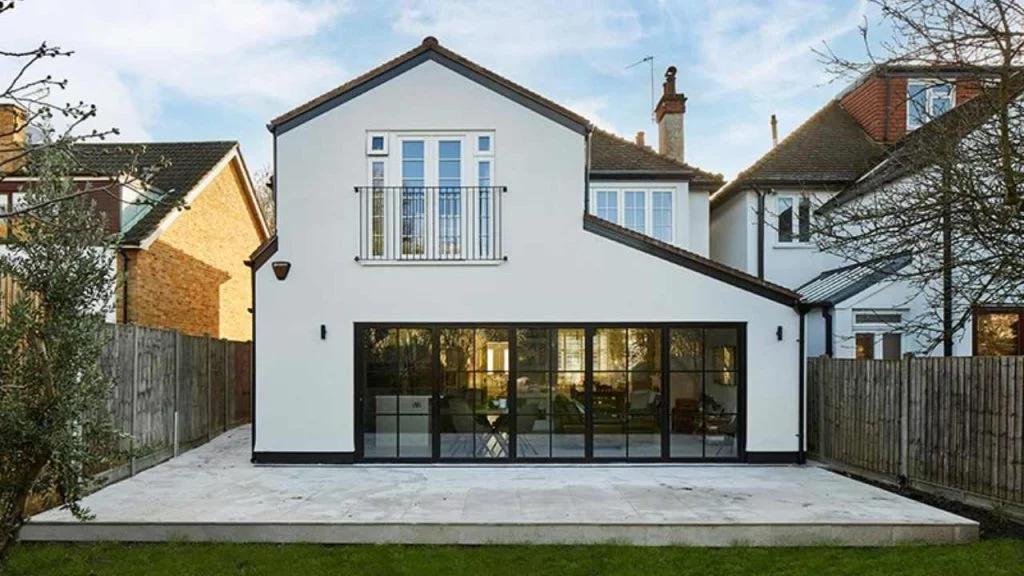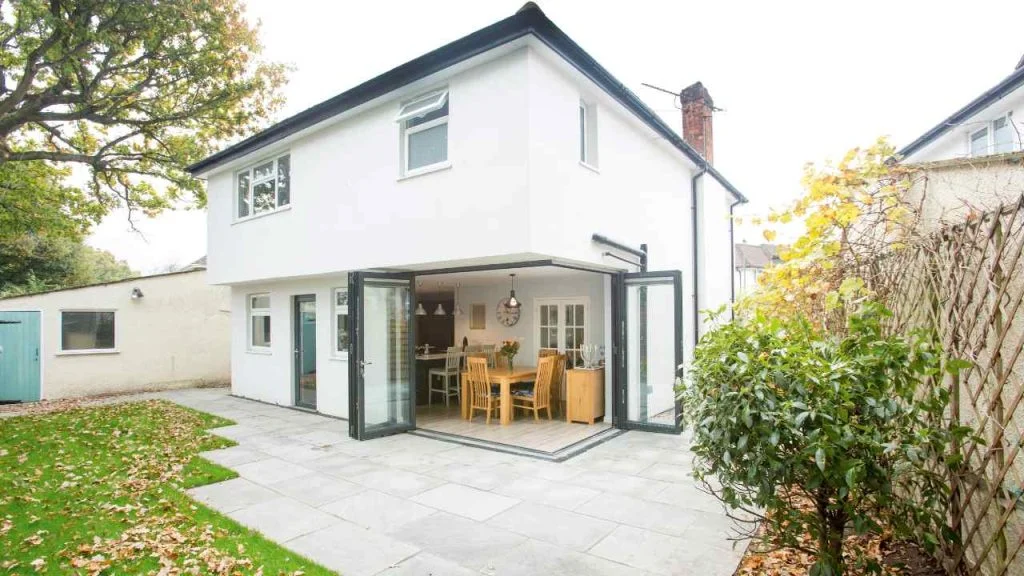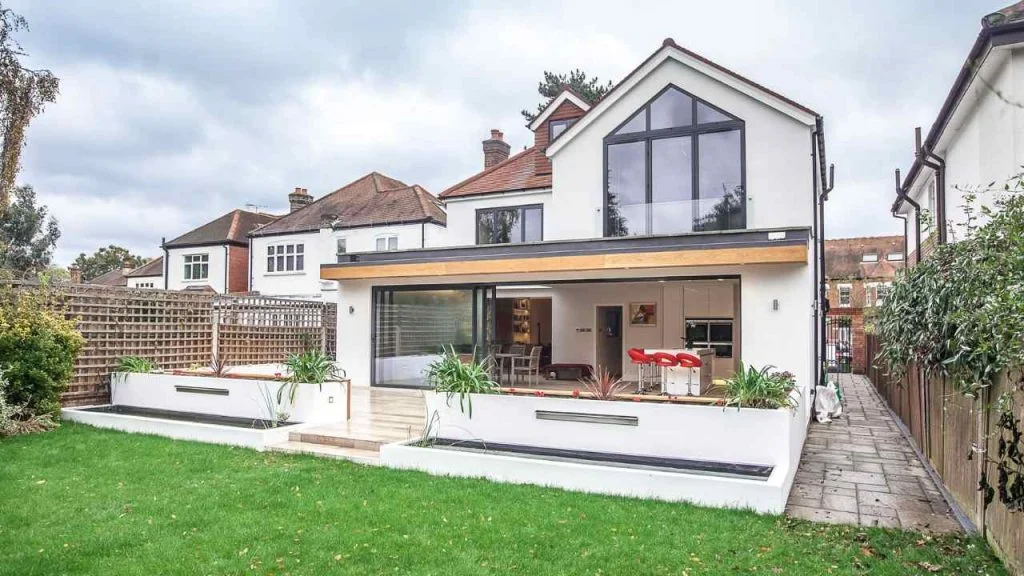Are you thinking of adding more space and value to your home with a two-storey extension? If so, you might be wondering what are the key design considerations for such a project. A two-storey extension can be a great way to transform your property, but it also requires careful planning and attention to detail.
In this blog, we will walk you through navigating planning permissions and adhering to building codes, choosing the right architectural style, and ensuring your extension is as green as it is grand.
So, let’s get started!
What Are the Benefits and Challenges of a Two-Storey Extension?
A two-storey extension can offer many benefits for homeowners, such as:
- Increasing the living space and functionality of your home
- Adding more bedrooms, bathrooms, or other rooms to suit your needs
- Enhancing the curb appeal and value of your property
- Creating a more comfortable and modern living environment
- Avoiding the hassle and cost of moving to a bigger house
However, it also comes with some challenges, such as:
- Finding enough space and light for the extension
- Matching the existing style and character of your house
- Dealing with the disruption and noise of the construction work
- Obtaining the necessary planning permission and building regulations
- Managing the budget and timeline of the project
Therefore, before you decide to go ahead, you need to weigh the pros and cons and consider your options carefully.
What Planning Permission & Building Regulations Are Required for a Two-Storey Extension?

Before starting your two-storey extension, familiarise yourself with Ireland’s planning permission and building regulations. Depending on the size, location, and design of your extension, you may or may not need to apply for planning permission from your local authority.
Generally speaking, you will need planning permission for a two-storey extension if it:
- Exceeds 40 square metres in floor area
- Is higher than the existing roof of your house
- Is closer than 2 metres to the boundary of your property
- Reduces the open space at the back of your house to less than 25 square metres
- Affects the privacy or amenity of your neighbours
Even if your extension does not require planning permission, you will still need to comply with the building regulations, which cover aspects such as:
- Structural stability and safety
- Fire safety and escape routes
- Ventilation and air quality
- Drainage and wastewater
- Insulation and energy efficiency
- Accessibility and mobility
Consulting with a professional is essential for navigating these requirements smoothly.
How to Estimate the Budget and Timeline for a Two-Storey Extension?
Another key design consideration is the budget and timeline of the project. The cost and duration of a two-storey extension can vary depending on factors such as:
- The size and complexity of the extension
- The materials and finishes used for the extension
- The labour and equipment required for the extension
- The site conditions and access for the extension
- The contingency and VAT for the extension
As a rough guide, you can expect to pay between €1,500 to €2,500 per square metre for a two-storey extension in Ireland, excluding VAT and fees. This means that a typical two-storey extension of 60 square metres can cost between €90,000 to €150,000.
The timeline of a project can also vary depending on the same factors, as well as the weather and any unforeseen issues. Generally speaking, you can expect to take between 6 and 12 months to complete, from the initial design to the final handover.
How to Choose the Architectural Style and Layout?

One of the most exciting and creative aspects of designing a two-storey extension is choosing the architectural style and layout of the extension. You have a lot of options and flexibility when it comes to the shape, size, and appearance of your extension, as long as you comply with the planning permission and building regulations. You can also tailor the extension to suit your personal taste, lifestyle, and needs.
Some of the common architectural styles and layouts for a two-storey extension are:
- A rear extension that extends the back of your house, creating more space for your kitchen, dining, or living area
- A side extension that extends the side of your house, creating more space for your garage, utility, or storage area
- A wrap-around extension that extends both the rear and the side of your house, creating more space for multiple rooms and functions
- A double-height extension that extends the full height of your house, creating more space for your bedrooms, bathrooms, or other rooms
- A dormer extension that extends the roof of your house, creating more space for your loft, office, or playroom
When choosing the architectural style and layout, you should consider factors such as:
- The orientation and views of your extension
- The natural light and ventilation of your extension
- The connection and flow of your extension with the rest of your house
- The privacy and security of your extension
- The functionality and aesthetics of your extension
What Structural and Technical Requirements Need to Be Considered for a Two-Storey Extension?
A two-storey extension involves a lot of engineering and technical work, such as:
- Building the foundations and substructure of the extension
- Erecting the walls and roof of the extension
- Installing the windows and doors of the extension
- Fitting the plumbing and electrical systems of the extension
- Applying the plastering and painting of the extension
These tasks require a lot of skill and expertise, as well as the right materials and equipment. They also need to be done in accordance with the building regulations and standards, and with the utmost care and quality.
To ensure that your extension meets the structural and technical requirements, you should hire a qualified and experienced property maintenance company, such as New Century.
How Environmental and Energy Efficiency Factors Affect the Two-Storey Extension?

The final consideration is the environmental and energy efficiency factors of the extension. A two-storey extension can have a significant impact on the environment and your energy bills, depending on how you design and build it. Therefore, you should aim to make your extension as eco-friendly and energy-efficient as possible, by considering factors such as:
- The insulation and air-tightness of your extension
- The heating and cooling systems of your extension
- The lighting and appliances of your extension
- The water and waste management of your extension
- The renewable and sustainable materials of your extension
By making your extension more environmentally friendly and energy efficient, you can benefit from:
- Reducing your carbon footprint and environmental impact
- Saving money on your energy bills and maintenance costs
- Improving your comfort and health in your extension
- Increasing the value and appeal of your property
- Complying with the building regulations and standards
To make your two-storey extension more eco-friendly and energy-efficient, you should consult with a green building expert or an energy consultant.
Conclusion
A two-storey extension can be a transformative project that promises not only to expand your space but also to elevate your home’s value and aesthetics. By carefully considering design, compliance, budget, and environmental factors, you can achieve an extension that perfectly complements your lifestyle and home. Ready to take the next step? Contact our team for expert advice and support in bringing your vision to life.
FAQs
Do I need planning permission for a two-storey extension?
Yes, most two-storey extensions require planning permission due to their potential impact on the property and its surroundings. It’s essential to check with your local authority for specific requirements.
How important is it to match the existing style of my home?
It’s highly recommended to ensure your extension complements the existing style of your home for aesthetic continuity and to maintain or enhance your property’s value.
What are the structural considerations for a two-storey extension?
Key structural considerations include the foundation’s strength, the load-bearing capacity of existing walls, and ensuring the new structure’s stability and safety.
How do I ensure my two-storey extension is energy efficient?
Incorporate high-quality insulation, double or triple-glazed windows, and energy-efficient heating and cooling systems to ensure your extension is energy-efficient.
How long does it take to complete a two-storey extension?
The timeline can range from a few months to over a year, depending on the project’s complexity, planning permission processes, and construction challenges.
Can I live in my home during the construction of a two-storey extension?
It’s possible, but be prepared for disruptions and consider temporary accommodations if necessary, especially during intensive phases of construction.

